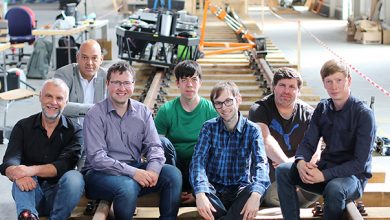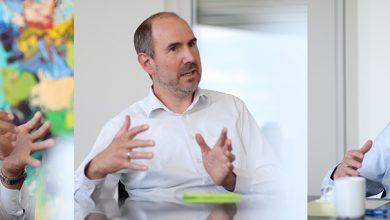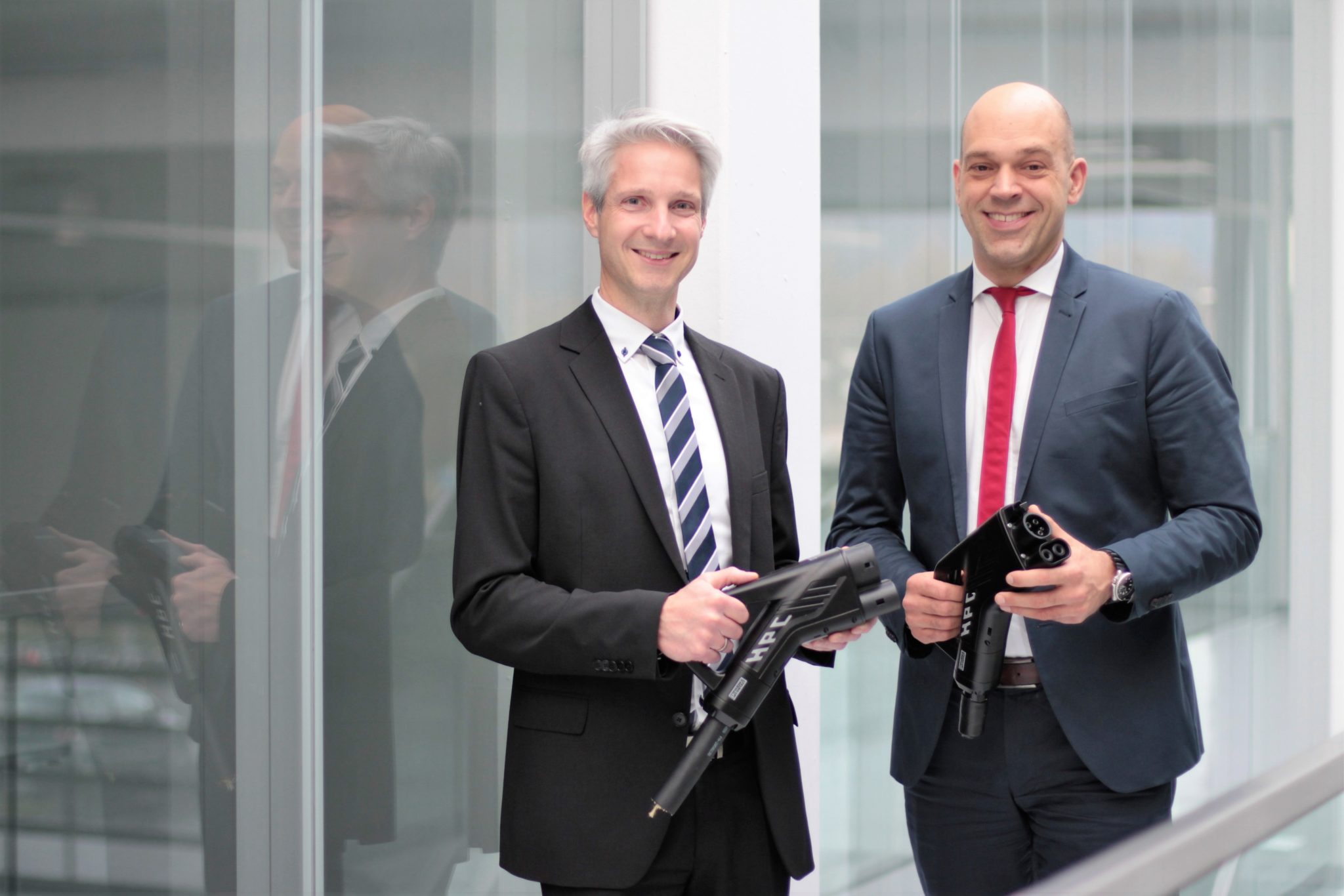Interview with Michael Heinemann and Ralf Döhre, the two managing directors of Phoenix Contact E-Mobility.
Michael Heinemann is CEO, Ralf Döhre is COO – both lead the innovative subsidiary together. How this works, which challenges lie ahead of them and whether both are already electrically powered, they will reveal here …
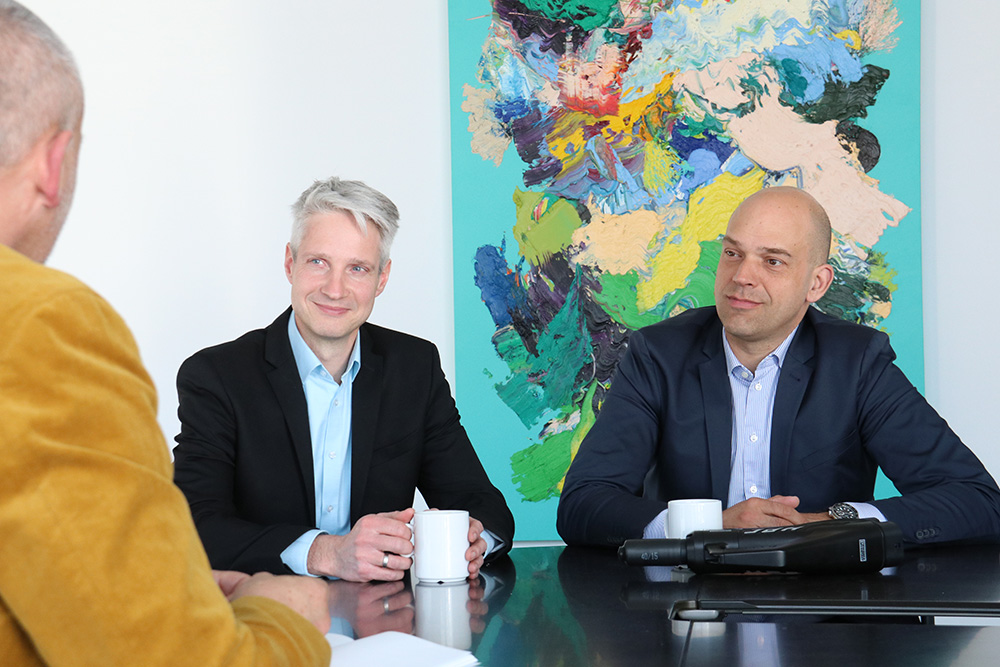
UPDATE: Mr. Döhre, Mr. Heinemann, since the beginning of 2019, you have headed Phoenix Contact E-Mobility GmbH as a two-person executive team. What is your professional background?
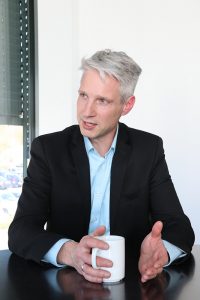
Ralf Döhre: I have been working for the Phoenix Contact Group since 2007. Initially in positions related to international productions. I have been working in Schieder since the foundation of E-Mobility GmbH in 2013. From the very beginning, I have been responsible for production, purchasing and industrial engineering. Since the change of management, at the beginning of 2019, I have also been responsible for the new Quality and Laboratory divisions. A logical and ideal addition to what I have already done in the past.
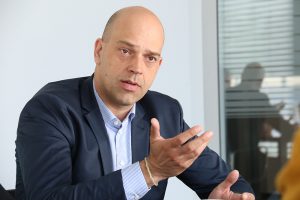
Michael Heinemann: I have been with the Phoenix Contact Group for almost 27 years. For the past 20 years, I have been dealing with the topic of power supply, most recently as Managing Director of Phoenix Contact Power Supplies in Paderborn. I have always had a very strong marketing and product orientation. This enabled me to develop a harmonious product portfolio and build product families for power supplies from various individual products that did not fit together very well. At E-Mobility GmbH, I have been responsible for sales and marketing since the beginning of the year and am in charge of the development department. Due to my electrical engineering knowledge, especially in the field of power engineering and power supply, I have a good background for these tasks. Ralf Döhre and I complement each other perfectly and also complement our teams with and around our abilities. Now, together with our employees, we want to occupy a leading position in the electric mobility market as Phoenix Contact E-Mobility.
Harmonious double chairmanship
UPDATE: So the responsibility for production and development is separate?
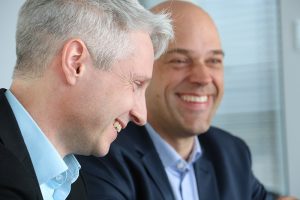
Döhre: In theory, there are different models of how the production and development departments should work together. We have discussed this, compared models and weighed which one is optimal for us. We are in a start-up phase and are also expanding in the direction of Asia and Poland. Especially when setting up new locations, production and quality should primarily belong together in order to continuously improve processes. On the other hand, marketing and sales are strong with the customer when the development department is immediately in a position to absorb and implement requirements. This is absolutely necessary because e-mobility is in a very steep growth and learning curve. In this respect, we have combined these areas as described and feel that we are well positioned. And practice shows: It works very well!
UPDATE: Why is individual transportion so emphasized in electromobility, but why is freight transport always pushed into the background? How do you see the opportunities in the commercial vehicle sector?
Heinemann: The commercial vehicle sector is enormously important for us, E-Mobility GmbH. One of our very first products, a battery change connector, made it possible to automatically change batteries in buses in the Chinese market. Basically, it will probably be because the subject of freight and commercial traffic is simply not really sexy. Therefore, it plays a rather subordinate role in the media. Individual transport, on the other hand, appeals to everyone and is therefore in the media focus. We all deal with questions such as how: Which will be my next car? How will the diesel crisis affect me? How do I counter driving bans? All this releases emotions and ensures attention.
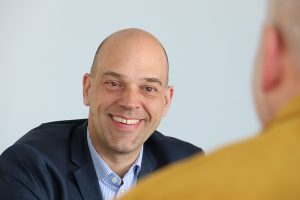
For us as a company, individual transport, i.e. passenger cars, means high unit numbers both now and in the future. If social rethinking in the field of mobility is followed by action, we must be prepared for a high output of our vehicle charging sockets. We are keeping a very close eye on the growing unit numbers and will solve the associated challenges.
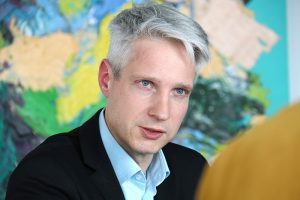
Döhre: But the commercial vehicle market is also undergoing radical change. We are increasingly noticing this, because our vehicle charging socket, also known as the Inlet, is in great demand. The great thing about our universally usable inlets is that they are developed and produced according to current automotive standards. They therefore offer the possibility of quickly retrofitting commercial vehicles. This is ideal for small series. In practice, there are now many positive examples of successful conversions with our CCS sockets – for a very wide range of commercial vehicle types.
Attitude to mobility
UPDATE: When it comes to mobility as a whole, how is society’s attitude changing?
Döhre: I believe that we are facing a certain change here. For many young people – especially in urban areas – it is no longer so important to have a driving license at 17 or 18. Other things, such as travel, are much more interesting for young people of this age. The importance and implementation of individual mobility is changing rapidly.
Heinemann: The book “Der letzte Führerscheinneuling” was recommended to me. The author argues that the last new driver’s license has already been born. So in 18 years at the latest there will be no more young people who leave the road traffic office with a fresh driving license. Essentially, the book deals with what tomorrow’s mobility will bring us thanks to e-mobility, autonomous driving and more and more sharing services. That is something I must read.
UPDATE: Has the change already reached you personally? How is the new top management of Phoenix Contact E-Mobility on its way?
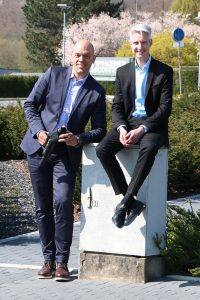
Heinemann: At some customer meetings and events in the recent past I was asked how my journey was. However, the question did not relate to traffic density, as in the past, but to the fact that people wanted to know how often I had to load. If you’re on the move when it comes to e-mobility, you should also pay attention to your choice of vehicle. I drive a partially electric hybrid company car. The range was an essential factor for the choice – vehicles with a range of 350 to 400 kilometers, without recharging, were rare at the time of purchase.
Since I like cars, I have to admit that I drive other vehicles on weekends as well. At some point there will certainly be affordable electric fun alternatives for leisure time.
Döhre: When it comes to choosing my vehicles, I’m more of a head person. Function goes beyond design. Since I worked at VW for a few years, I’m fixated on the gap dimension :-). As a father of a family, I currently drive a T6. But I am also convinced of electric mobility and so the next company car will be an electric car. Even if we in Germany, in comparison with the Netherlands or Scandinavia, still lag a little behind, one notices that Germany slowly but surely picks up speed in terms of electric mobility. And that’s good!
UPDATE: In order to accelerate the journey, additional innovations and progress are needed. What are the next technological steps?
Döhre: The focus is on the range of the vehicles and the availability of the charging stations. Both must increase in such a way that the technology is accepted by the broad masses, so the breakthrough must occur in the minds as well as on the road. I don’t want to have to wait more than ten minutes when refueling or charging. With our HPC technology, we have laid an important foundation for the suitability of electric mobility for everyday use.
Range is not the problem
UPDATE: Acceptance of electromobility is a good keyword – how must our attitude to mobility fundamentally develop so that something like a traffic turnaround becomes realistic?
Heinemann: The young generation is already making other experiences in terms of mobility – for this generation, driving licenses and their own cars are no longer so important. Car sharing, over or high-speed trains replace one’s own movement cocoon. On the other hand, if you are 30 or older, your own car is often still your favorite child. One cannot imagine not owning a car. With this way of thinking, we Germans in particular are already very special. But I am sure that this picture will change completely, not least because of our young generation.
87 percent of all vehicles in Germany drive less than 60 kilometers a day. Range is therefore not really the obstacle to electric mobility. A range of 250 to 300 kilometers is quite sufficient. That’s all we really need. But as long as your dearest child is pampered and cared for all year round, you also have to take him on holiday. It would be much more effective to rent a car for long distances, which you only drive very rarely.
Döhre: Yes, this rethinking is one thing. On the other hand, the traffic turnaround will only work if the concepts of public transport are once again adapted and drastically revised – especially in rural regions. It is virtually impossible to move here without a car. This would require significant investment and infrastructure improvements.
Car sharing is another building block that is still far too weakly developed in Germany – this is quite different in China, for example, and makes a major contribution to the success of modern mobility.
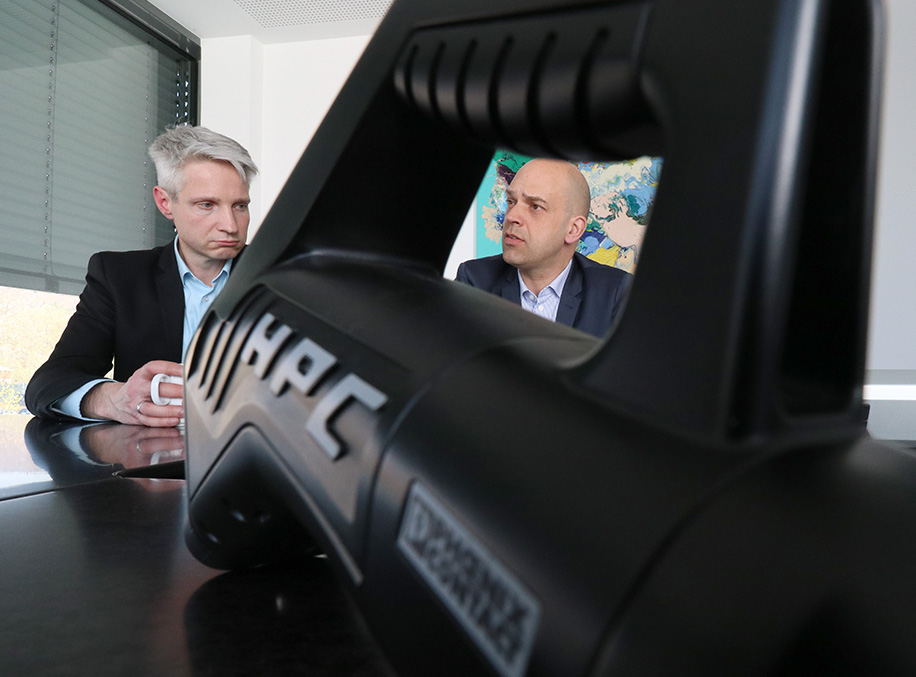
Heinemann: When I travel to the larger cities of Germany, whether Hamburg, Berlin or Munich, I don’t go there by car if possible. I go to Munich or Berlin by train or fly there. From there it goes into the public local traffic.
From our company headquarters in Schieder I can’t even cross the mountain to Blomberg, five kilometers away, to the headquarters of our parent company – there is simply no reasonable local transport connection. So you have to use your own car. My conclusion: The traffic turnaround is already working in metropolises, unfortunately not yet in rural areas.
Mobility will be free of charge
UPDATE: Are we brave enough to create new, simple concepts for mobility? Or are we too “old economy” and remain too long in established structures?
Heinemann: I find the example of Tesla fascinating. They simply build an electric vehicle. And if there are no charging stations, they also build the charging stations. I find the business models behind them even more fascinating.In Germany we are still very product-oriented. The Americans are much further ahead here with their service-oriented models.
Tesla not only built charging stations, but also provided free electricity when there were problems with billing. In the end, it was totally worth it for Tesla. In the end, Tesla hardly had to pay for a kilowatt hour of electricity itself. The charging stations were simply placed where restaurants or shops are located. The free electricity was then carried by the owners of the shops and restaurants. Tesla has implemented the mobility, the local operator has sold goods or meals and taken over the electricity for his new customers. A win-win situation – there is almost no better way.
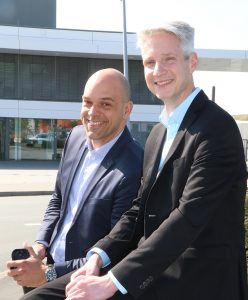
CEO Dirk Ahlborn of Hyperloop is taking an even more radical approach to mobility change. The Hyperloop is a high-speed tube for transporting people and goods. In an interview in which I was able to participate, Dirk Ahlborn answered my question about his vision of mobility in 2050, that it would then be free of charge. The use of the hyperloop would be free in any case. This statement sounds crazy at first. How can mobility be free for the user?
The solution is simple – the insertion of advertising, coupled with instant online shopping during transport, will ensure that the transport itself is free. In addition, Ahlborn expects that even individual transport will be free of charge. In the year 2050, vehicles drive autonomously, so that no one will have to sit at the steering wheel anymore. Here, too, advertising can be used to finance mobility, because the passenger will be receptive to advertising.
The mentality plays a decisive role here. While we Germans still argue in love with products, other nations are open to truly disruptive approaches – completely new ways of thinking.
Döhre: Actually, it’s hard for me to imagine that, too. But others have also been mistaken, like Ken Olsen, 1977, who said that nobody needed a PC at home. We have seen so many groundbreaking and disruptive innovations in recent years that it is becoming more difficult to reject new approaches.
UPDATE: Thank you so much for the interview.
